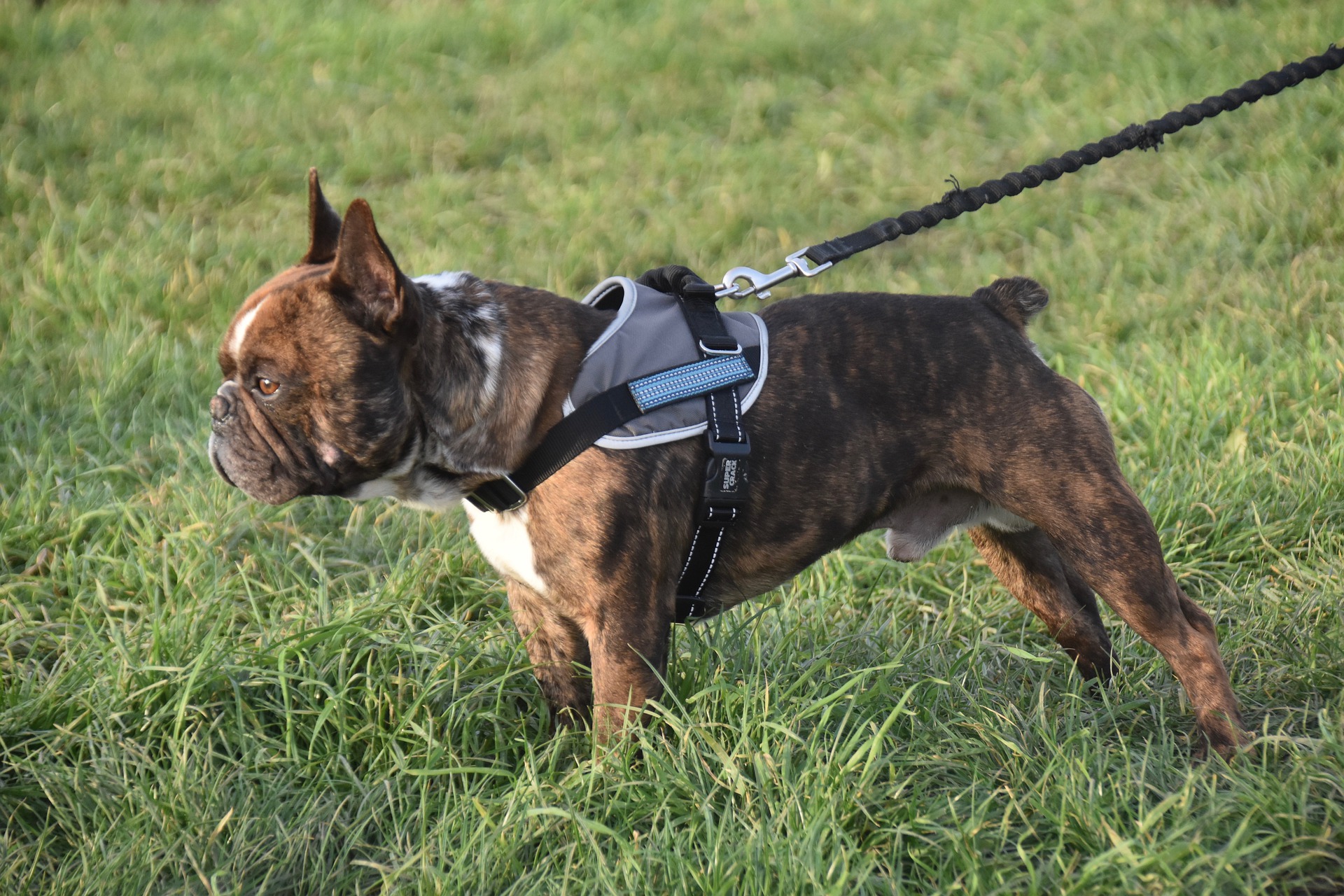Each dog is different, and each owner has different training goals and needs. Did you know that the type of harness and leash you use on walks and during training can make a big difference in your success? Familiarize yourself with the different types of leashes so that you can make a well-informed decision on what will best suit you and your furry friend.

Gentle Leader Harness
This harness fits around the muzzle and behind your dog’s ears. It’s an excellent training tool if your pup struggles with barking, jumping, or lunging while on a leash. The Gentle Leader gives you full control over your dog’s head and mouth without causing choking or trachea damage the way that pulling on a collar does. Since it goes over their muzzle, it takes some time, desensitization, and rewarding to get your dog used to the feeling of wearing this harness, so be patient when first introducing it.
Back-clip Harnesses
Harnesses where you attach the leash to the back are a great option for dogs who are already pretty well-behaved walkers. It’s much safer than walking on a collar for the occasions that your dog does pull or lunge, but there are better options if your dog pulls consistently.
Front-clip Harness
These harnesses work wonders when training a dog that pulls constantly. By clipping the leash in front of their chest, the act of pulling causes them to be turned around to face you–which isn’t what they wanted! You’ll notice that your pup quickly learns that in order to move forward to where they want to go, they cannot pull. However, this isn’t training in itself; if you try moving back to a collar or back-clip harness, your dog will likely pull as hard as ever. Incorporate anti-pull training along with the front-clip harness for successful, long-term results.
Standard Leash
These are your basic leashes–they usually are between 4 and 6 feet long, have a looped handle at one end and a clasp at the other. Some leashes come with a second handle sewn closer to the clasp to keep your dog closer and have better control when you’re in crowded, high-traffic areas. You can find these standard leashes in a variety of materials such as nylon, rope, leather, or even hemp for a comfortable, hypoallergenic option.
Retractable Leashes
While retractable leashes seem great in theory, they’re actually quite ineffective and even unsafe. They can cause injury when a dog picks up speed before hitting the end of its retractability, wrenching both the dog and their human’s arm. It’s difficult to reel in your dog when they’re pulling at the other end, which is dangerous when walking alongside a road or in a crowded area. Additionally, these leashes inadvertently teach dogs that pulling works–they successfully get more freedom when they act against the tension of the reel.
Adjustable Leashes
These leashes are great for many different scenarios. They have clips on both ends of the leash, and metal rings along its length. This allows you to vary the size of the handle you use, clip the leash around your waist, or tie your dog up easily without needing to do any looping or knotting.
If you need help with obedience training, or are simply looking to help your dog brush up on a few basic commands– call Gulf Coast Dog Training today.




